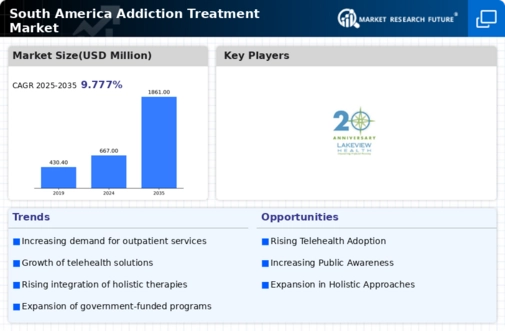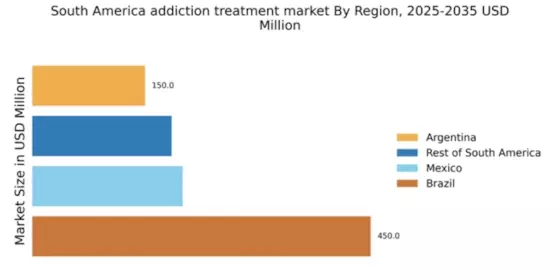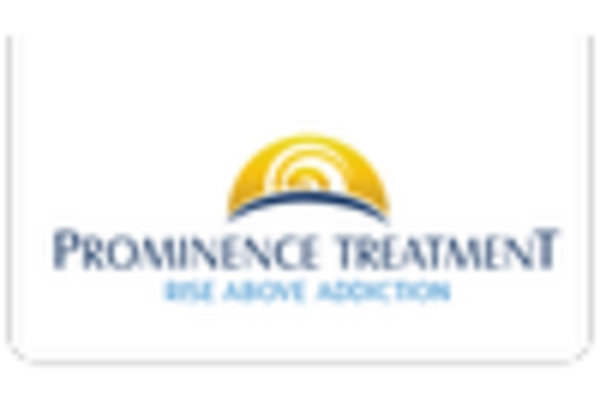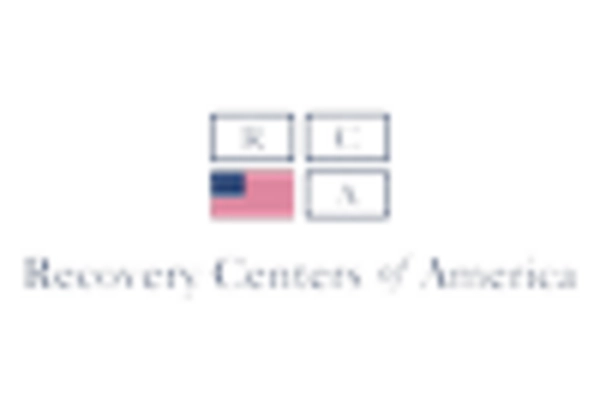Rising Awareness and Education
There is a growing awareness of addiction as a health issue in South America, which is driving the addiction treatment market. Educational campaigns aimed at reducing stigma and promoting understanding of addiction have gained traction, particularly in urban areas. This shift in perception encourages individuals to seek treatment, as they become more informed about the resources available. The addiction treatment market is adapting by offering more accessible and varied treatment options, including outpatient services and support groups. Additionally, educational institutions are beginning to incorporate addiction studies into their curricula, further fostering a culture of understanding and support. As awareness continues to rise, the market is likely to see an increase in demand for services.
Increasing Substance Abuse Rates
The rising rates of substance abuse in South America are a critical driver for the addiction treatment market. Reports indicate that countries like Brazil and Argentina have seen a surge in the use of illicit drugs, with estimates suggesting that around 3.5% of the population engages in drug use. This alarming trend necessitates the expansion of treatment facilities and services, as the demand for effective addiction treatment solutions grows. The addiction treatment market is responding by developing more comprehensive programs tailored to the specific needs of these populations. Furthermore, the economic burden of untreated addiction, which can reach billions of dollars annually, underscores the urgency for effective intervention strategies. As awareness increases, more individuals are likely to seek help, further propelling the market's growth.
Government Initiatives and Funding
Government initiatives aimed at combating addiction are significantly influencing the addiction treatment market in South America. Various national and local governments have recognized the need for enhanced treatment options and have allocated substantial funding to support these efforts. For instance, Brazil's Ministry of Health has launched programs that provide financial resources for rehabilitation centers, which has led to an increase in the number of facilities available. This funding not only helps in establishing new treatment centers but also enhances existing ones, ensuring they meet the growing demand. The addiction treatment market benefits from these initiatives as they create a more structured environment for treatment, allowing for better access and improved outcomes for individuals seeking help.
Technological Advancements in Treatment
Technological advancements are playing a pivotal role in shaping the addiction treatment market in South America. Innovations such as mobile applications for tracking recovery progress and online support groups are becoming increasingly popular. These technologies provide individuals with greater access to resources and support, which is particularly beneficial in remote areas where traditional treatment options may be limited. The addiction treatment market is leveraging these advancements to enhance patient engagement and improve treatment outcomes. Furthermore, the integration of data analytics allows for more personalized treatment plans, catering to the unique needs of individuals. As technology continues to evolve, it is expected that its impact on the market will grow, potentially leading to more effective treatment methodologies.
Cultural Shifts Towards Holistic Approaches
Cultural shifts in South America are leading to a greater acceptance of holistic approaches to addiction treatment. Many individuals are seeking alternatives to conventional methods, favoring treatments that incorporate mental, emotional, and spiritual well-being. This trend is prompting the addiction treatment market to expand its offerings to include holistic therapies such as yoga, meditation, and nutritional counseling. As these approaches gain popularity, treatment centers are increasingly integrating them into their programs, recognizing the potential for improved recovery outcomes. The market is likely to see a rise in demand for such services, as individuals seek comprehensive care that addresses the multifaceted nature of addiction. This cultural evolution may also encourage more individuals to pursue treatment, further driving market growth.


















Leave a Comment